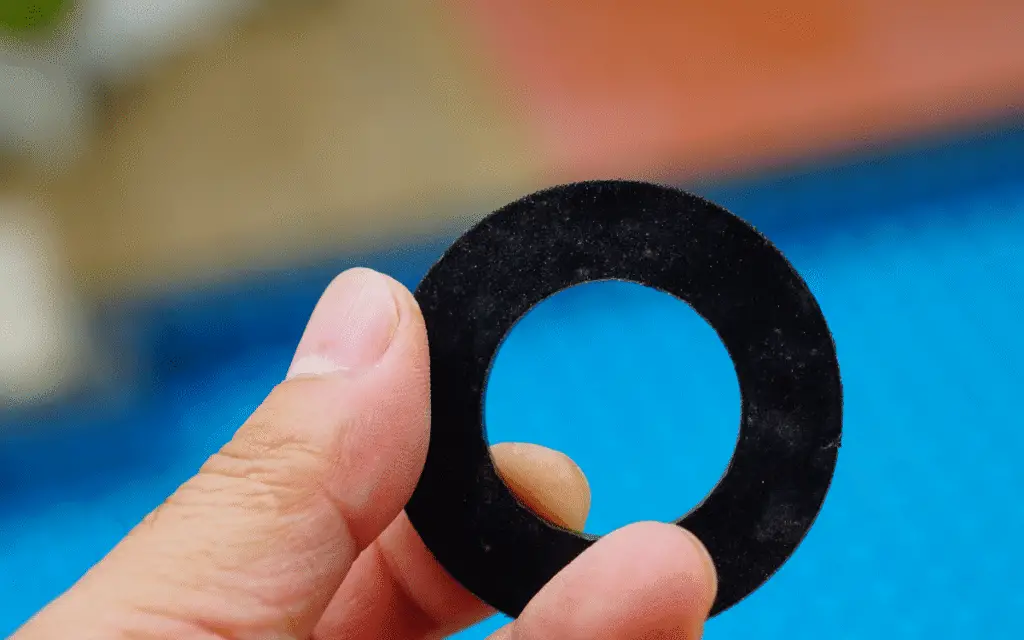What’s holding together the machinery that keeps major industries running? Often, it’s something small and easily overlooked: rubber gaskets.
These components are everywhere, quietly doing their job to keep systems sealed, secure, and running efficiently. And while they might not get the spotlight, their role is massive. Industrial rubber gaskets aren’t just “nice to have” — they’re essential in sectors that demand tight seals under pressure, temperature shifts, and exposure to chemicals.
Let’s look at where they’re most critical, how they function in these environments, and why choosing the right gasket can mean the difference between seamless operation and costly downtime.

What Makes Rubber Gaskets So Useful?
Before diving into applications, it’s important to understand why rubber gaskets are chosen over other materials. They’re flexible, compressible, resistant to a wide range of temperatures, and can handle exposure to oils, gases, and chemicals. Plus, rubber materials can be formulated in many ways, allowing them to suit very specific industrial conditions.
From standard nitrile to more specialized compounds like EPDM or fluorocarbon-based rubbers, each type brings unique strengths. That’s what makes them so adaptable across industries.
Now, onto where they’re used.
1. Oil and Gas
Few environments are as harsh or demanding as oil and gas. Rubber gaskets here have to deal with:
- High pressures
- Extreme temperatures
- Constant vibration
- Chemical exposure (including hydrocarbons, acids, and caustics)
In drilling equipment, pipelines, valves, and pumps, these gaskets are crucial. A single failure in the seal could mean leaks, safety hazards, and even shutdowns. That’s why materials need to be tough, and they often need to meet specific industry standards for performance under heat and chemical stress.
In offshore applications, especially, the combination of saltwater, pressure, and mechanical stress makes gasket performance a serious concern. That’s why quality rubber gasket suppliers are a must. Choosing the right supplier ensures access to materials that meet strict offshore standards and can handle the intense demands of the environment.
2. Chemical Processing
In chemical plants, gaskets are on the front lines, sealing joints and flanges in systems that carry highly reactive substances. The big risk? If chemicals escape or react with the wrong material, it can quickly escalate into dangerous territory.
Rubber gaskets in this industry are typically made with materials chosen for chemical compatibility. Fluoroelastomers, for example, offer resistance to many aggressive substances, including strong acids and solvents.
Reliability matters here more than almost anywhere else. The goal isn’t just performance, it’s also about protecting people, equipment, and the environment.
3. Power Generation
Whether it’s a nuclear plant, coal-fired facility, or renewable energy system, power generation depends heavily on well-sealed systems.
Steam lines, cooling systems, turbines… all of these involve high-pressure or high-temperature environments where leakage simply isn’t an option. Gaskets in this sector often deal with steam, oils, fuels, and water, and they must remain functional over long service intervals.
Some materials used here include high-temp rubber blends designed to resist thermal cycling. Downtime is expensive, so the longer a gasket lasts without compromising the seal, the better.
4. Food and Beverage Processing
This might not be the first sector you think of when you picture rubber gaskets, but it’s a big one. Hygiene, safety, and compliance are top priorities in food and beverage operations.
Gaskets are used in piping systems, processing equipment, and storage tanks — anywhere fluids or gases need to be contained. Here, materials must be food-safe, non-toxic, and resistant to cleaning chemicals. Rubber compounds used in this space are often specially formulated for sanitization cycles and frequent temperature changes.
A gasket that fails can compromise an entire batch or lead to contamination, so precision and quality control are key.
5. Water Treatment and Utilities
From wastewater treatment plants to municipal water systems, rubber gaskets play an essential role in keeping these systems sealed and operational.
Pumps, valves, filters, and flanges all rely on reliable gaskets to prevent leaks and withstand constant flow. Materials here need to resist both clean and contaminated water, along with chlorine and other disinfectants.
Because these systems operate continuously, gaskets must offer a long lifespan without hardening, cracking, or deteriorating from constant exposure.
6. HVAC and Refrigeration
Heating, ventilation, and air conditioning systems require gaskets to manage airflow and prevent leaks in ductwork and refrigeration lines. In refrigeration, especially, rubber gaskets are used to seal in refrigerants, which can be corrosive and need precise pressure maintenance.
Temperature swings are constant in these systems, so materials that hold their shape and flexibility across the range are preferred. It’s also important that gaskets help maintain energy efficiency — a leak can force systems to work harder and increase power consumption.
7. Automotive and Heavy Equipment
Engines, transmissions, braking systems, and fuel systems… they all use rubber gaskets to keep fluids contained and parts isolated from contaminants. These gaskets handle exposure to oil, grease, fuel, and high heat.
Durability under vibration is a must. In heavy machinery and transport vehicles, the gasket has to maintain its seal under extreme mechanical stress. Poor sealing in these applications can lead to mechanical failure or even safety issues.
This is also one of the sectors where standardization matters. Gaskets need to meet strict specs for each component they’re used in.
8. Marine and Shipbuilding
Saltwater, pressure changes, temperature swings…marine environments are tough on materials. Rubber gaskets are used in onboard engines, pumps, exhaust systems, and hydraulic systems.
They must be corrosion resistant and able to seal under vibration and movement, which are constant factors on a vessel. Flexibility is key. If a gasket becomes brittle or warps, the seal fails, and water intrusion or equipment breakdown becomes a risk.
In shipbuilding, it’s common to use custom-fitted rubber seals to match the specific geometry of pipes and machinery, ensuring a tight fit that won’t shift under motion.
Why the Right Gasket Material Matters
No matter the industry, a gasket is only as good as the material it’s made from. The wrong rubber in the wrong environment leads to early failure. That’s why a one-size-fits-all approach doesn’t work here.
Everything depends on the specific conditions:
Is it exposed to heat?
Are there aggressive chemicals involved?
Will it be under constant pressure or movement?
Those details shape the choice of material, thickness, and even how the gasket is cut or molded.
Not Just a Piece of Rubber
It’s easy to overlook the gasket. It’s not the biggest part, or the most expensive, and it doesn’t move or make noise. But without it, the whole system can come undone.
From massive energy plants to food-grade production lines, rubber gaskets are doing critical work. They’re trusted to create seals that don’t slip, break, or corrode, often under the harshest conditions imaginable.



















